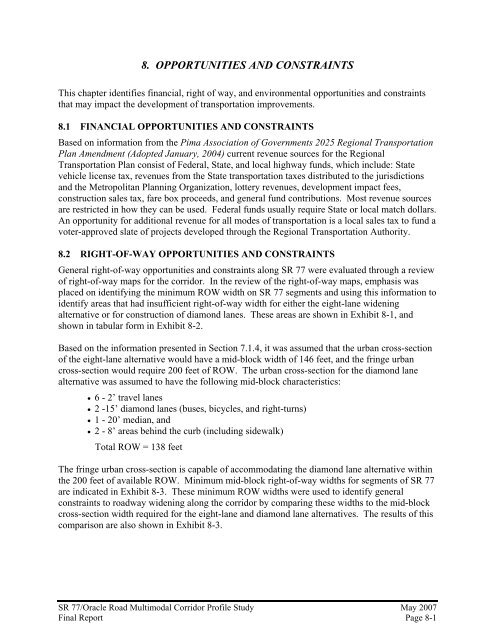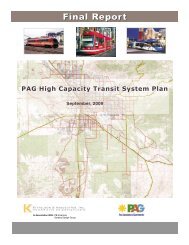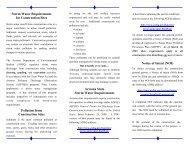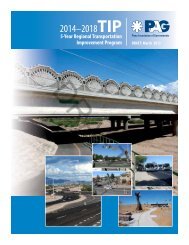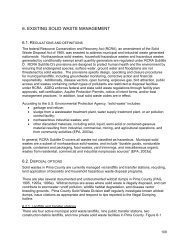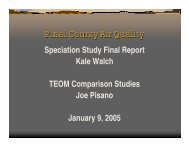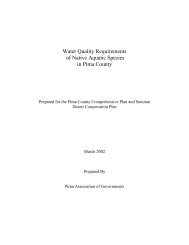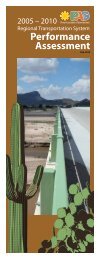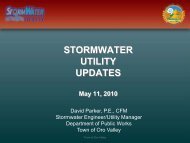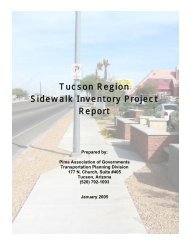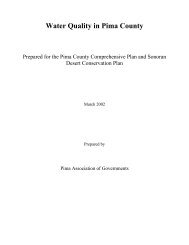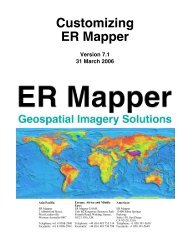sr 77/oracle road multimodal corridor profile study final report - Pima ...
sr 77/oracle road multimodal corridor profile study final report - Pima ...
sr 77/oracle road multimodal corridor profile study final report - Pima ...
Create successful ePaper yourself
Turn your PDF publications into a flip-book with our unique Google optimized e-Paper software.
8. OPPORTUNITIES AND CONSTRAINTS<br />
This chapter identifies financial, right of way, and environmental opportunities and constraints<br />
that may impact the development of transportation improvements.<br />
8.1 FINANCIAL OPPORTUNITIES AND CONSTRAINTS<br />
Based on information from the <strong>Pima</strong> Association of Governments 2025 Regional Transportation<br />
Plan Amendment (Adopted January, 2004) current revenue sources for the Regional<br />
Transportation Plan consist of Federal, State, and local highway funds, which include: State<br />
vehicle license tax, revenues from the State transportation taxes distributed to the jurisdictions<br />
and the Metropolitan Planning Organization, lottery revenues, development impact fees,<br />
construction sales tax, fare box proceeds, and general fund contributions. Most revenue sources<br />
are restricted in how they can be used. Federal funds usually require State or local match dollars.<br />
An opportunity for additional revenue for all modes of transportation is a local sales tax to fund a<br />
voter-approved slate of projects developed through the Regional Transportation Authority.<br />
8.2 RIGHT-OF-WAY OPPORTUNITIES AND CONSTRAINTS<br />
General right-of-way opportunities and constraints along SR <strong>77</strong> were evaluated through a review<br />
of right-of-way maps for the <strong>corridor</strong>. In the review of the right-of-way maps, emphasis was<br />
placed on identifying the minimum ROW width on SR <strong>77</strong> segments and using this information to<br />
identify areas that had insufficient right-of-way width for either the eight-lane widening<br />
alternative or for construction of diamond lanes. These areas are shown in Exhibit 8-1, and<br />
shown in tabular form in Exhibit 8-2.<br />
Based on the information presented in Section 7.1.4, it was assumed that the urban cross-section<br />
of the eight-lane alternative would have a mid-block width of 146 feet, and the fringe urban<br />
cross-section would require 200 feet of ROW. The urban cross-section for the diamond lane<br />
alternative was assumed to have the following mid-block characteristics:<br />
• 6 - 2’ travel lanes<br />
• 2 -15’ diamond lanes (buses, bicycles, and right-turns)<br />
• 1 - 20’ median, and<br />
• 2 - 8’ areas behind the curb (including sidewalk)<br />
Total ROW = 138 feet<br />
The fringe urban cross-section is capable of accommodating the diamond lane alternative within<br />
the 200 feet of available ROW. Minimum mid-block right-of-way widths for segments of SR <strong>77</strong><br />
are indicated in Exhibit 8-3. These minimum ROW widths were used to identify general<br />
constraints to <strong>road</strong>way widening along the <strong>corridor</strong> by comparing these widths to the mid-block<br />
cross-section width required for the eight-lane and diamond lane alternatives. The results of this<br />
comparison are also shown in Exhibit 8-3.<br />
SR <strong>77</strong>/Oracle Road Multimodal Corridor Profile Study May 2007<br />
Final Report Page 8-1


